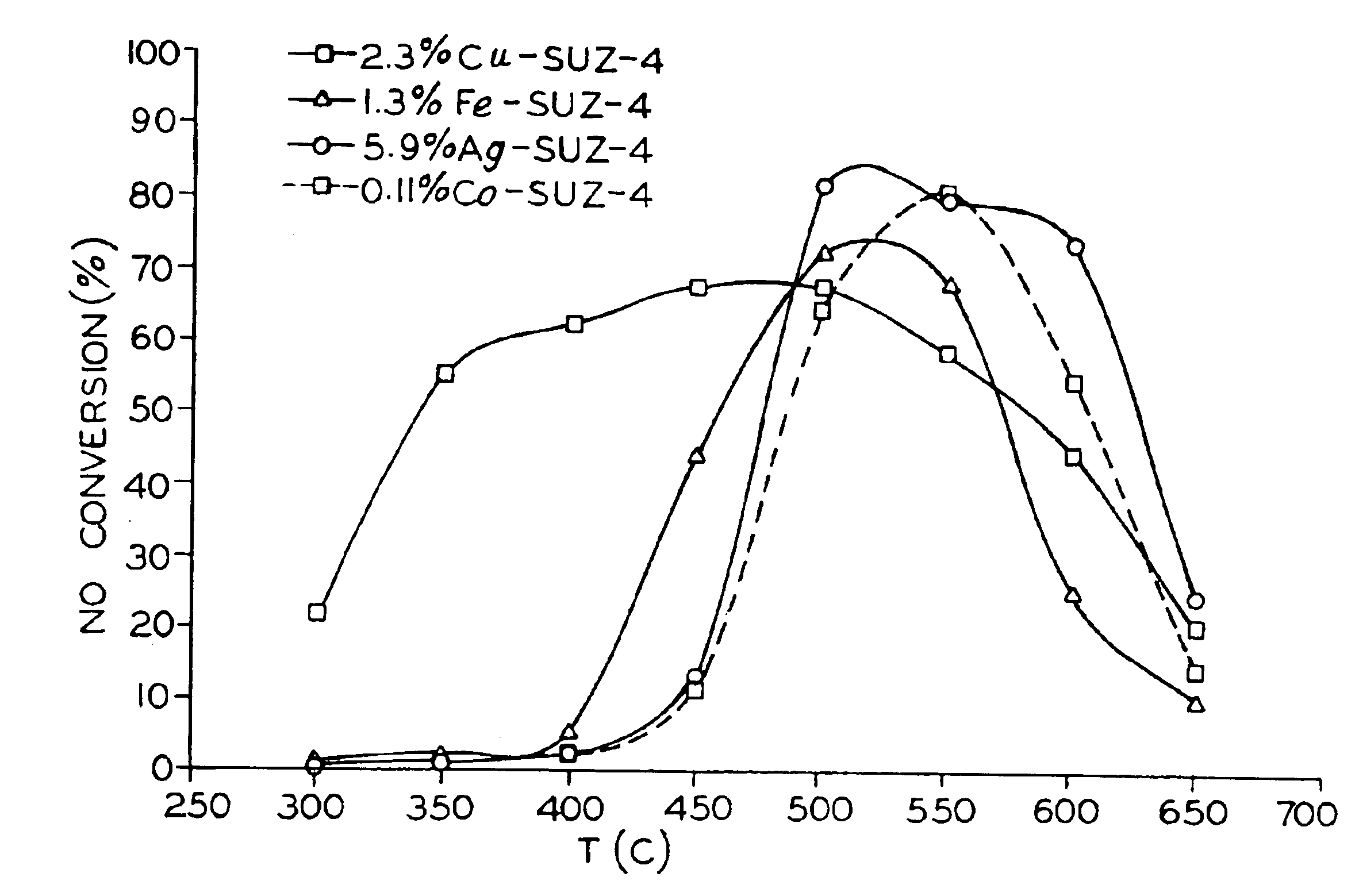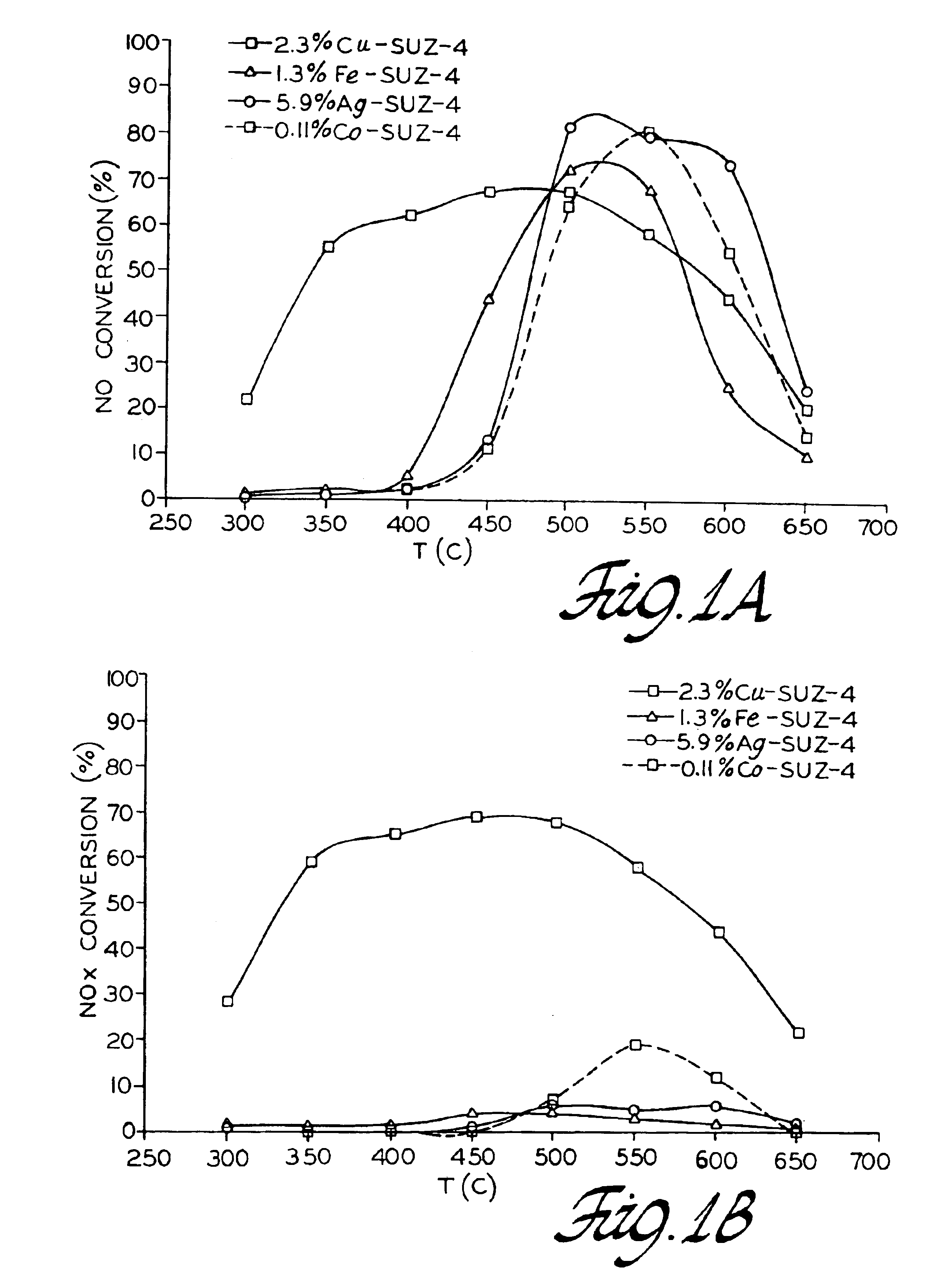Hydrothermally stable catalyst for improved lean NOx reduction
a technology of nox reduction and hydrothermal stable catalyst, which is applied in the direction of physical/chemical process catalyst, mechanical equipment, separation process, etc., can solve the problems of not being effective in reducing nox, three-way catalysts while active, and remaining a major technical barrier to the automotive application of lean-burn engine technology, etc., to achieve the effect of reducing nitrogen oxides, reducing nitrogen oxides, and reducing nitrogen oxides
- Summary
- Abstract
- Description
- Claims
- Application Information
AI Technical Summary
Benefits of technology
Problems solved by technology
Method used
Image
Examples
Embodiment Construction
Preparation of the Catalysts
[0022]SUZ-4 was synthesized according to the following procedure. 33.55 g KOH pellets (86% KOH, 14% water by weight) were dissolved in 170 g distilled water in a plastic bottle. 1.888 g of Al pellets were added with the bottle loosely capped (H2 gas is evolved), and the solution was stirred overnight so that the Al pellets were completely dissolved to form a clear solution. A second solution containing 91.13 g tetraethylammonium hydroxide (35% aqueous solution by weight), 175 g Dupont Ludox AS-40 (40% colloidal SiO2 by weight), and 145.2 g distilled water was prepared, and then the two solutions were mixed slowly with stirring to form an easily flowing gel. The gel was transferred to a one-liter autoclave and the solution was heated to 150° C. under autogenous pressure with stirring for four days. The product was retrieved by filtration, washed to pH2 and holding at 550° C. for 4 hours. The elemental analysis of a typical SUZ-4 zeolite sample resulted in ...
PUM
| Property | Measurement | Unit |
|---|---|---|
| temperature | aaaaa | aaaaa |
| temperature | aaaaa | aaaaa |
| weight | aaaaa | aaaaa |
Abstract
Description
Claims
Application Information
 Login to View More
Login to View More - R&D
- Intellectual Property
- Life Sciences
- Materials
- Tech Scout
- Unparalleled Data Quality
- Higher Quality Content
- 60% Fewer Hallucinations
Browse by: Latest US Patents, China's latest patents, Technical Efficacy Thesaurus, Application Domain, Technology Topic, Popular Technical Reports.
© 2025 PatSnap. All rights reserved.Legal|Privacy policy|Modern Slavery Act Transparency Statement|Sitemap|About US| Contact US: help@patsnap.com



